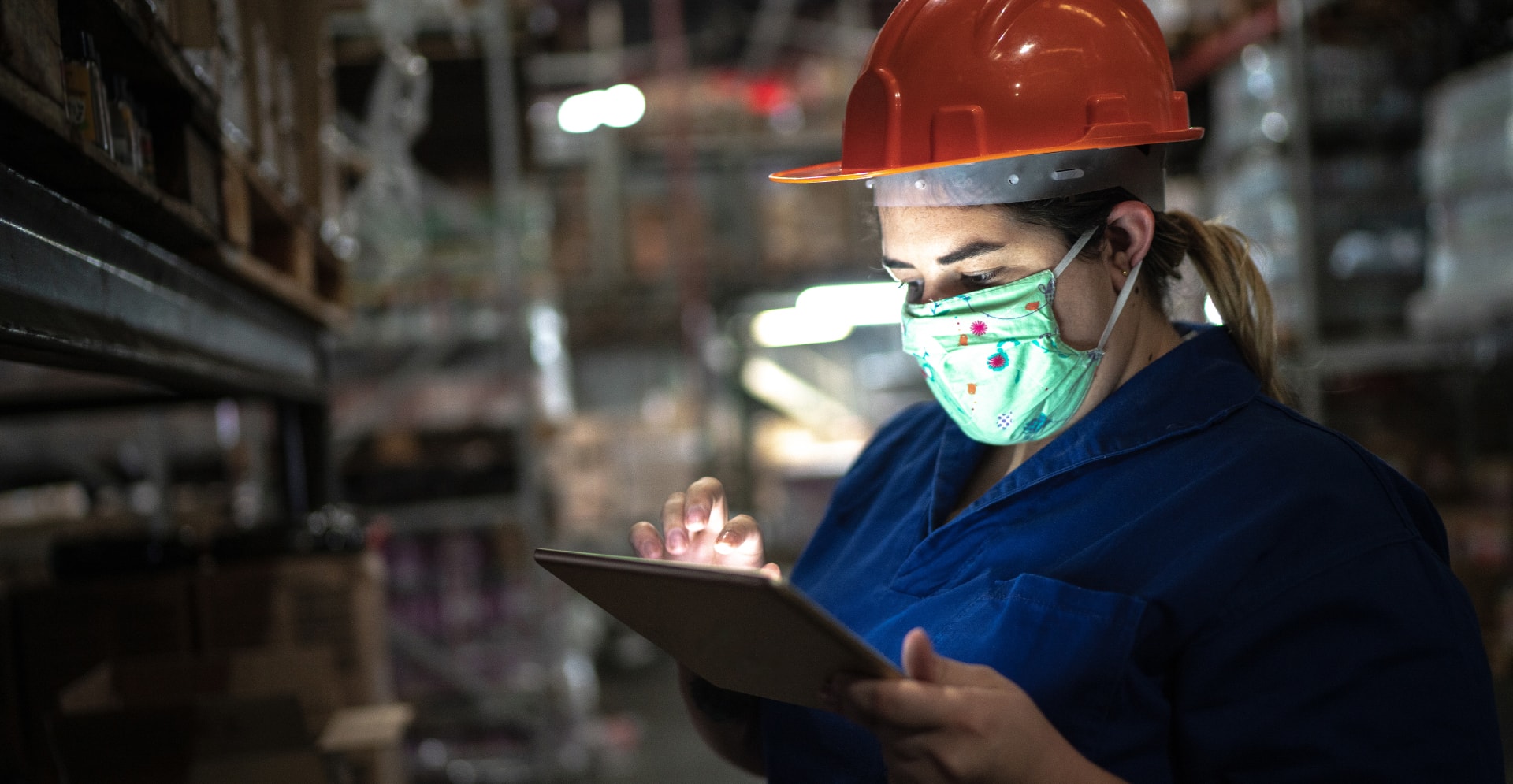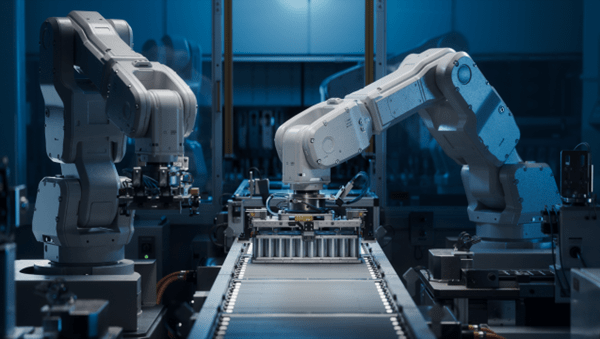Restarting operations after COVID-19 will be much more complex than lifting quarantines. Matt DeMarco reached out to some From Industry, for Industry members to discuss challenges your organization might face soon.
Lately, I’ve heard people talking about how good it will be to return to work and “get back to normal.” To me, it’s not that simple. New protocols to prevent spikes in COVID-19 might make the familiar workplaces people are eager to return to unrecognizable. In many ways there is no going back, but there will definitely be something next.
Rebooting industry is more complex than lifting quarantines. Companies will have to reconfigure operations, adopt more measures to protect employees and their communities, and more – all while trying to bring operations up to speed. Social distancing and enhanced sanitation will affect every industry, but a closer look at specific needs in different sectors reveals unique challenges your company might face.
To provide insights around the challenges ahead, I reached out to some of our From Industry, for Industry leaders to ask about what they’re working on with and hearing from clients.
Pharma: Bringing non-essential workers back safely
Ted Schilling, PE, CEM
West Region Design and Engineering Manager
Right now, I’m working with a pharma client to plan the repopulation and startup of operations. I am responsible for engineering controls, working closely alongside team members in charge of operations, health and safety, R&D, and production.
We are working through the challenges of bringing a curtailed manufacturing and R&D facility back to full production. Returning the non-essential employees back on site safely is considerably difficult. Buildings need modifications that allow for safe operations and alignment with the latest CDC guidance. Changes we’re working on include:
- Adding system cleaning and retrofits to address the virus in the airstream in the HVAC systems. Technologies including ultraviolet (UV) cleaning are being investigated.
- Replacing manual doors with automatic doors to remove human touch.
- Developing a dedicated area and system for verifying body temperature, and also what to do when someone is exhibiting an elevated temperature.
- Developing the ability to effectively clean any surface people touch. Plus, exploring ways to test for cleanliness and ensure we can sustain multiple cleanings per day.
- Questions about capacity must be addressed. For example, how many people can be in an elevator at one time? And what resources are needed to manage that requirement?
- Designing a process to ensure incoming material, outgoing product flows and material storage areas are sanitized.
- Preparing for slower construction and materials handling processes that allow team members who handle tools and materials to complete their tasks safely.
- Managing the supply, recycling and disposal of gloves, facemasks and shoe covers.
- Establishing pressurization zones in non-manufacturing buildings.
- Managing visitors and planning their arrivals. For example, will they arrive at a central location so they can be tested and trained on the new protocols, or are multiple locations required to allow for sanitation protocols between visitors?
- Determining and understanding business impact of whether personal protective equipment (PPE) such as cleanroom smocks, face shields, masks and gloves will be made part of the normal daily uniform.
- Measuring the impact of working from home on productivity versus the old operations model. Also, understanding what percentage of non-essential staff will work from home and how that impact would impact owned real estate requirements.
Automotive: Rethinking operations in and outside the yellow lines
Joe DeMarco
Client Program Manager
Auto assembly plants are accustomed to getting back up and running efficiently. Historically, though, restarts meant getting back to business as usual after something like a supply chain shortage or equipment failure. Now, what goes on outside the yellow lines – arriving for work, eating in cafeterias, changing in locker rooms – is as important as what goes on inside the yellow production lines.
Based on talks I’ve had with clients and other industry insiders, the people side could be the biggest challenge. Asking staff to make major changes like arriving earlier for a temperature screening, taking breaks at a new time, or working differently. These will be extensive overhauls to the routines staff are accustomed to. Even PPE requirements might be met with resistance if staff feel less in control when using it. Some operators, for example, perform tasks where it is safer to not use gloves because they can get caught in a spindle. Or, there might be concerns about fogging masks hindering performance. Leaders must consider how people might feel about changes, and effectively communicate with the workforce to maximize adoption.
What goes on inside the yellow lines is a different story. Everything on the line is arranged for efficiency, and if you can’t expand or change the station, then six feet of distance isn’t going to happen. Organizations will have to strategize around minimizing the time in close contact or implementing stricter cleanliness measures to protect staff.
The optimal plan for disinfecting shared areas and equipment might take time to figure out. New techniques like UV lighting might be useful, and I also wonder if the companies that pivoted to ventilator manufacturing could borrow from what they learned there. The rooms to build those were required to meet higher cleaning standards, so some techniques might be useful in keeping the line sanitized.
The auto companies are paving new ground here, so they will have to figure it out as they go. I expect ongoing iterations that optimize the improvements, address employee concerns and adhere to changing CDC guidelines. Long-term, my hope is we’ll see permanent change. Adapting now could make organizations more resilient to ongoing COVID impacts as well as future threats to business continuity.
Oil & Gas: Dealing with a historic drop in demand
Jeffrey Munic
Technical Director
John Bailie
Operations Director – Embedded Resource Leader
Compared to some other sectors, the oil industry is more adept at dealing with known hazards and complex health and safety plans. The workforce is used to stringent requirements, using PPE, and other aspects that might be new elsewhere, so it should be an efficient transition for staff to adapt to any new COVID-specific regulations.
The real issue is how the lack of cash flow in the sector due to the broad economic downturn affects long-term capital planning. Oil is always cyclic, and budgets ebb and flow according to the price of crude. People forget that before COVID-19, the price was plunging to unprecedented lows because of geopolitical maneuvers. The pandemic drove demand down further, and we saw some companies take it as an opportunity to push out some competitors.
Organizations are tightening their belts instead of using the slow production time to focus on pursuing needed CAPEX projects so they can hold market positions. Oil and gas is very cash-flow-oriented; if a company is not making money, it probably won’t spend it. Companies are cancelling large capital projects and looking at new ways to cut back through outsourcing, staff reduction, and whatever else might help in the short-term (or however long until the next normal arrives). One industry leader is slashing its capital projects budget by 30% and OPEX by about 20%.
For the most part, if a project was not in the execution or implementation phase, it’s on pause for now. There’s no way to justify the returns on investment with crude trading so low and no clear end in sight. There are a handful of long-term, strategic capital projects and projects driven by regulatory requirement that remain active. But even there we are streamlining scopes to complete projects within smaller capital than originally planned and with little complementary investment for ancillaries.
As companies analyze opportunities to maximize safety and cost-efficiency, new ways of working could emerge. We have been helping some clients test remote digital options for going into the field, assessing plans, and completing other tasks virtually. That could be exciting, as sometimes oil and gas is slower to adopt digital tools like 3D models, and building information modeling. System integration of these tools might be introduced out of necessity, but their value would extend well past the pandemic.
With the economy slowly reopening, we will soon see whether it gets the energy flowing again. Analysts are still saying the situation is moving too erratically to predict, but a continued downtrend for oil and gas could result in consolidations or closures of household names.
Advancing industries together
Even if the ripple effects of the pandemic affect us differently, it is important to remember that we are all in this together. Our Industrial Infrastructure team is here to leverage decades’ worth of experience managing shutdowns, reboots, reorganizations and implementations in various sectors. We are innovative and flexible, and ready for what comes next. Contact me to find out more about how we can help.








